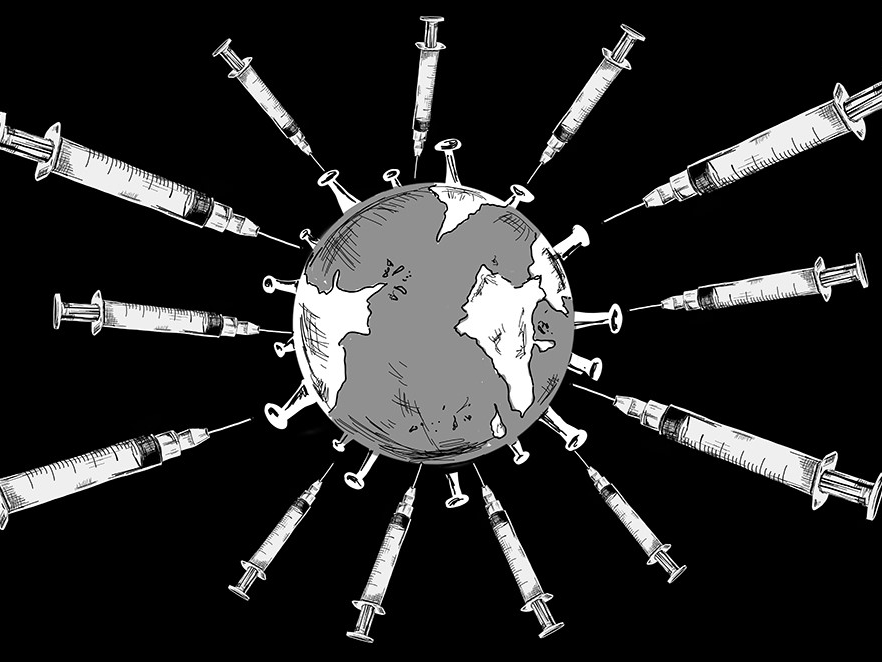Well, we’re the band
We are over a year into the COVID-19 pandemic and the global community still confronts extreme social and economic strain. Yet, even with uncertainty about the path of the pandemic, a way out of this health and economic crisis is increasingly visible.
China has mobilised fiscal, governmental and monetary resources to effect a steady recovery from the fallout of the COVID-19 outbreak a year ago. Growth in one part of the world facilitates growth elsewhere and IMF estimates suggest the PRC will be the single largest direct contributor to global growth in 2021.
Rather than diving deep into the macro data widely available on Google, let’s have some quick takes on the songs we are playing.
40 face masks for everyone in the world
Production in China gradually recovered from the second quarter of 2020 as the economy reopened. Demand for masks, hospital suits and gowns, ventilators and other pandemic-related goods was a key driver of China’s record export performance in 2020, along with computers and other work-from-home equipment needed for locked-down populations around the world. Factories in China exported 224 billion masks in 2020, almost 40 for every person in the world outside of China.
Tesla, outward bound from China
Tesla’s super factory in Shanghai officially resumed production on 10 February 2020. In parallel to the pandemic, the Shanghai plant continued expanding its production capacity to nearly 450,000 vehicles in 2021. On 26 October 2020, the Tesla Model 3 passed all the certification requirements for entering the European market and was officially exported to Europe, including Germany, France, and Switzerland.
Tesla’s emerging rival, Xpeng, has made its first exports to Norway in 2020, with the first 100 Xpeng G3 electric sport utility vehicles being delivered to customers there.
Double 11 hit record high
Chinese e-commerce giants Alibaba and JD.com have set new sales records for 2020’s “Double Eleven” shopping bonanza as the two online retailers have extended the sales window for the shopping event to drive up consumption crippled by the COVID-19 pandemic.
During the shopping festival that ran from November 1 to November 11, Alibaba generated 498.2 billion yuan ($74.1 billion) in gross merchandise value, which rose sharply from 268.4 billion yuan a year ago. 250,000 brands participated in the shopping carnival, about 31,000 of which were from overseas, with livestreaming becoming a key marketing tool for vendors. Meanwhile, JD.com logged 271.5 billion yuan in transaction volume for the 11-day period, compared with 204.4 billion yuan it registered in 2019.
The world’s biggest internet IPO since Uber
Kuaishou, the world’s No. 2 short-video app behind ByteDance’s TikTok, raised $5.4 billion on its debut in Hong Kong in February 2021, making it the world’s biggest internet IPO since the $8.1 billion U.S. share sale of Uber in May 2019. The company continues to ride China’s lucrative livestreaming e-commerce trend, fuelled by the pandemic-induced demand for online shopping, with its gross merchandise volume sold via the platform reaching 381.2 billion yuan in 2020 over six times bigger than the previous year.
In 2020, Kuaishou’s average number of daily active users was 264.6 million, a year-on-year increase of 50.7%. That was more than Twitter’s 187 million and Snapchat’s 249 million. Domestic rival Douyin owned by ByteDance has more than 600 million DAU in the same period.
The biggest migration
This might be the biggest migration in human history, the migration to digital space, creating new winners on a massive scale. Meituan which runs the most popular takeout delivery service in China, has about 3.99 million registered delivery workers, a number that has grown by more than 2.1 million since the epidemic began in China. In the third quarter of last year, the gross transaction value of Meituan’s food delivery business increased by 36% year-on-year, and its food delivery business’s operating profit jumped to 768.5 million yuan ($117.9 million) from 330.9 million yuan of the same period in 2019, according to its third-quarter results.
Vaccination – the long and winding road to herd immunity
As of 10 April 2021, China had administered more than 164 million doses of COVID-19 vaccines on its 1.4 billion-strong population. The country plans to vaccinate 40% of its population by the end of June. However, it’s still relatively low compared to other countries that have vaccinated 40% to 60% of their populations. And questions have surfaced recently about the efficacy of several Chinese vaccine candidates.






